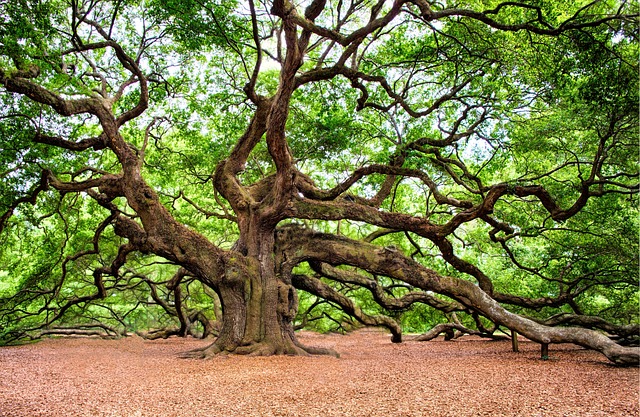Tree and shrub maintenance through pruning is essential for maintaining plant health, promoting growth, and ensuring safety within a landscape. Effective pruning involves selectively cutting away unhealthy or structurally unsound branches to enhance the plant's form, airflow, and light penetration, which are critical for resilience and disease avoidance. Gardeners and arborists should tailor their pruning to each plant's species-specific needs and optimal timing to minimize stress. For instance, deciduous trees like oaks and maples should be pruned during dormancy to prevent sap exudation, while evergreens require regular grooming. Using the right tools for precise cuts is vital for swift healing and minimal disease transmission. It's advisable to consult local horticultural resources or a certified arborist for site-specific advice to maximize results. Pruning requires careful attention to safety and effectiveness, with protective gear and proper technique recommended. Species-specific pruning is crucial, as rapid healers can handle more aggressive cuts at the right time, while slower healing trees need gentle handling. Regular pruning shapes plants, enhancing airflow and sunlight exposure, which can deter disease and pests. Over-pruning and improper tool use should be avoided to prevent harm. Professional arborists offer specialized knowledge for optimal pruning times and techniques, ensuring healthy growth and the integrity of trees and shrubs. Their expertise accounts for the tree's age, patterns, and environmental conditions, allowing for timely interventions and long-term health maintenance.
Effective tree and shrub pruning is a practice that not only shapes landscape elements but also promotes plant health and safety. This article delves into the nuances of safe and effective pruning techniques, guiding readers through the fundamentals, species-specific considerations, and practical steps for maintaining both trees and shrubs. By understanding the intricacies of pruning and recognizing common pitfalls to avoid, gardeners can enhance their greenery’s vitality. Moreover, the significance of professional arborists in upholding the health and beauty of these plant specimens through expert pruning services is highlighted. Tree and shrub care enthusiasts will gain valuable insights to ensure their gardens thrive.
- Understanding the Fundamentals of Tree and Shrub Pruning
- Assessing Your Tree and Shrub Species for Proper Pruning Techniques
- Step-by-Step Guide to Safe and Effective Pruning Practices
- Common Mistakes to Avoid When Pruning Trees and Shrubs
- The Role of Professional Arborists in Ensuring Healthy Growth Through Expert Pruning Services
Understanding the Fundamentals of Tree and Shrub Pruning
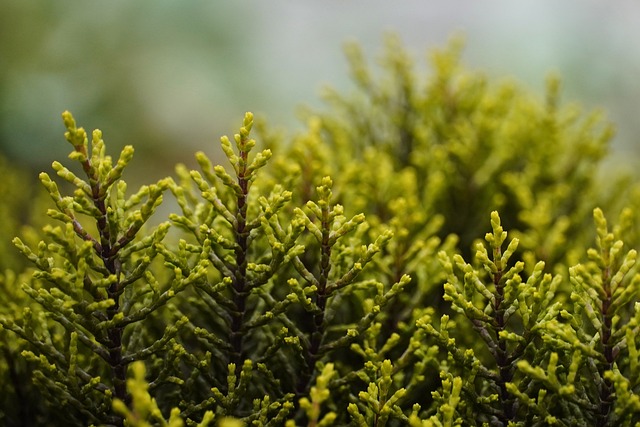
Tree and shrub pruning are essential practices for maintaining plant health, promoting growth, and enhancing safety in landscapes. Pruning correctly encourages plants to develop strong, sturdy branches by removing weak, diseased, or damaged limbs. This process not only shapes the tree or shrub aesthetically but also improves air circulation and light penetration within the canopy, which is crucial for plant vigor and disease prevention. Understanding the type of plant, its specific growth patterns, and the correct timing for pruning are fundamental aspects that one must consider when approaching tree and shrub maintenance. For instance, deciduous trees are typically pruned during dormancy to minimize the risk of bleeding from cut surfaces, while evergreens may require more frequent trimming to manage their dense foliage. By adhering to these principles, gardeners and arborists can effectively maintain the health and appearance of trees and shrubs, ensuring they thrive in their environment. Proper tools and techniques, such as using bypass pruners for live branches and loppers for larger stems, are key to executing clean cuts that heal quickly and reduce the risk of introducing or spreading plant pathogens. Always consult regional horticultural guidelines or a certified arborist for species-specific pruning recommendations to achieve optimal results.
Assessing Your Tree and Shrub Species for Proper Pruning Techniques
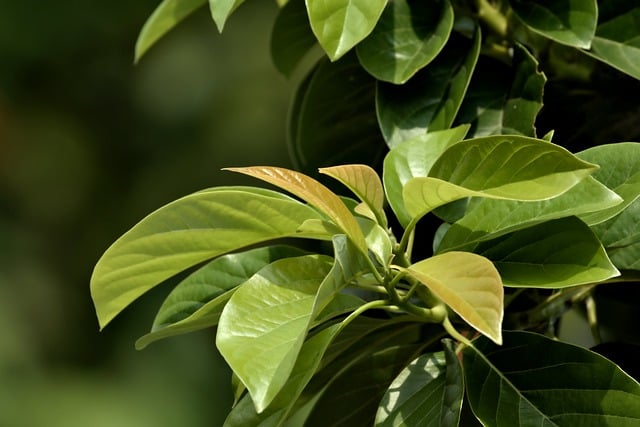
When approaching tree and shrub pruning, it is imperative to understand the specific needs of each species. Different trees and shrubs have distinct requirements for optimal health and growth. For instance, deciduous trees, such as oaks and maples, typically require more aggressive pruning during their dormant season to prevent disease and promote airflow. Conversely, evergreen shrubs like holly or boxwood may benefit from light pruning throughout the year to maintain their shape and density. To ensure proper pruning techniques, one must first identify the species of the plant in question. This identification allows for the application of species-specific pruning practices. For example, fruit trees often have unique pruning needs to maximize fruit production and tree health; understanding these nuances is crucial for effective maintenance. Additionally, pruning young trees and shrubs involves different considerations than those applied to mature specimens. Early training of a plant’s structure can prevent the need for more drastic intervention later on. Always refer to horticultural guidelines or consult with a certified arborist to determine the best practices for your particular tree or shrub species, ensuring both safety and effectiveness in your pruning efforts.
Step-by-Step Guide to Safe and Effective Pruning Practices
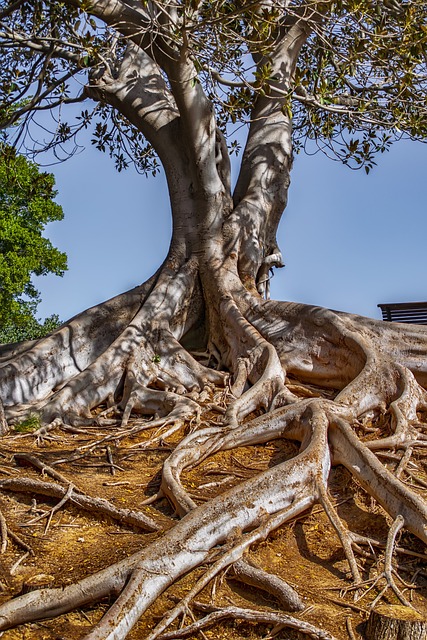
When engaging in tree and shrub pruning, safety and efficacy are paramount to maintain healthy growth and prevent property damage or personal injury. Begin by inspecting your tools beforehand; ensure pruners, loppers, and saws are sharp, clean, and in good repair. This will make cuts cleaner and more precise, reducing the risk of disease transmission between plants. Always don protective gear such as gloves, safety glasses, and a hard hat when climbing or working overhead. Proper stance and technique are crucial; stand firm with your body positioned three points of contact away from the cut direction to avoid accidents.
Understanding the specific pruning needs for each tree and shrub species is essential for successful maintenance. Maples, birches, and oaks, for example, heal quickly from cuts, so larger branches can be removed during the right season. Conversely, deciduous trees like beeches and hornbeams have longer healing capacities, necessitating more cautious pruning, typically in late dormancy or early spring. Always aim to remove only one-fourth of a tree’s crown at any one time to prevent shock, and remember to prune shrubs to promote airflow and sunlight penetration, which deters disease and pest infestations while shaping the plant aesthetically. Regularly scheduled pruning, combined with sharp tools and personal safety measures, will result in safe and effective tree and shrub maintenance.
Common Mistakes to Avoid When Pruning Trees and Shrubs

When pruning trees and shrubs, it’s crucial to avoid certain pitfalls that can compromise the health and aesthetics of your plants. One frequent mistake is over-pruning, which can lead to weakened structures and stunted growth. Always remove only the dead, diseased, or crossing branches, and be cautious not to remove more than a quarter of the tree’s canopy in a single session. Additionally, improper tool usage can cause injury to both the pruner and the plant. Ensure that your tools are sharp and sanitized to make clean cuts, reducing the risk of disease transmission. Avoid tearing or crushing the bark with dull blades, as this can create entry points for pests and pathogens. Lastly, timing is key; know the species-specific pruning times to avoid harm. For example, many trees are best pruned during dormancy to minimize the risk of introducing disease when sap flows are at their peak. Understanding these common mistakes and integrating this knowledge into your pruning practices will lead to healthier, more beautiful trees and shrubs in your landscape.
The Role of Professional Arborists in Ensuring Healthy Growth Through Expert Pruning Services
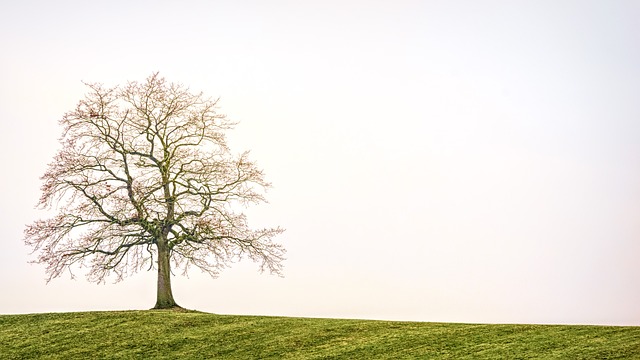
When it comes to maintaining the health and aesthetics of trees and shrubs, professional arborists play a pivotal role through their expert pruning services. These trained specialists understand the intricate needs of these woody plants, recognizing not just the correct time for pruning but also the specific techniques required for different species. Their expertise ensures that only necessary branches are removed, promoting healthy growth and preventing potential harm to the tree or shrub. By providing precise cuts, arborists help to direct new growth, improve plant structure, and enhance the overall health of the vegetation, which is crucial for its resilience against diseases and pests.
The decision-making process in pruning is a delicate one, as it involves assessing the tree’s biotic and abiotic factors, including its age, growth patterns, and environmental conditions. Professional arborists are adept at interpreting these factors to make informed decisions about which branches to prune. This thoughtful approach minimizes stress on the plant and maximizes its potential for robust development. Furthermore, their knowledge extends to recognizing signs of distress or disease early on, allowing for proactive measures that can save a tree from decline or even death. With their comprehensive understanding of arboriculture, these experts are invaluable in ensuring that trees and shrubs thrive in urban and natural landscapes alike.
Effective tree and shrub pruning is a multifaceted practice that requires a comprehensive understanding of species-specific needs, safe handling of equipment, and an awareness of common pitfalls. By adhering to the guidelines outlined in this article—from grasping the fundamentals of pruning to recognizing the unique characteristics of each tree and shrub species—anyone can enhance the health, safety, and aesthetics of their greenery. Remember, when in doubt, consulting a professional arborist is the best course of action to ensure your trees and shrubs remain robust and vibrant. Regular maintenance through proper pruning not only promotes plant vitality but also contributes to the overall well-being of your landscape.
